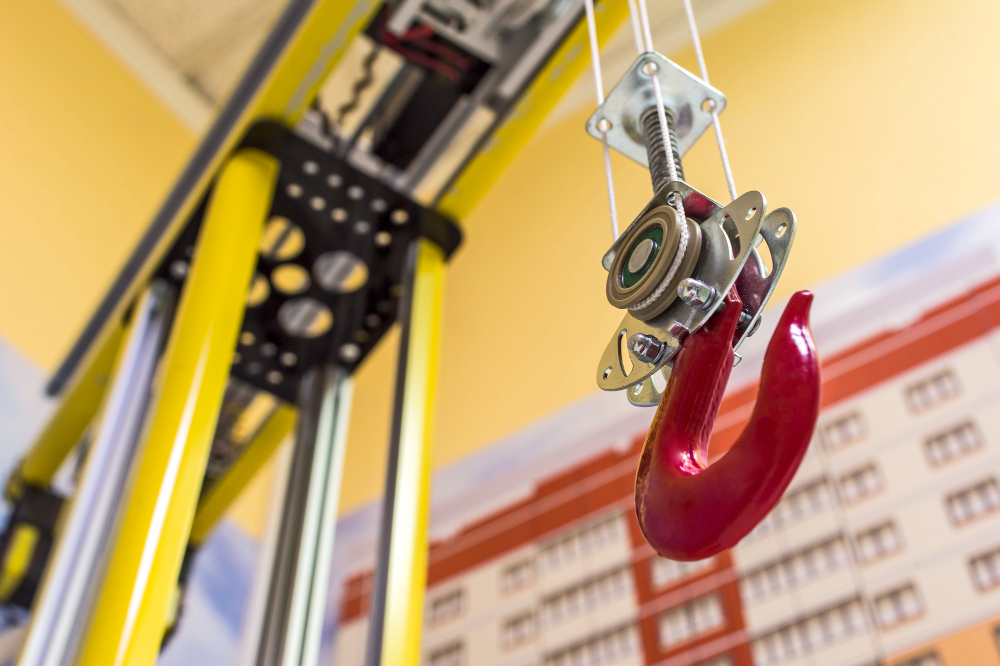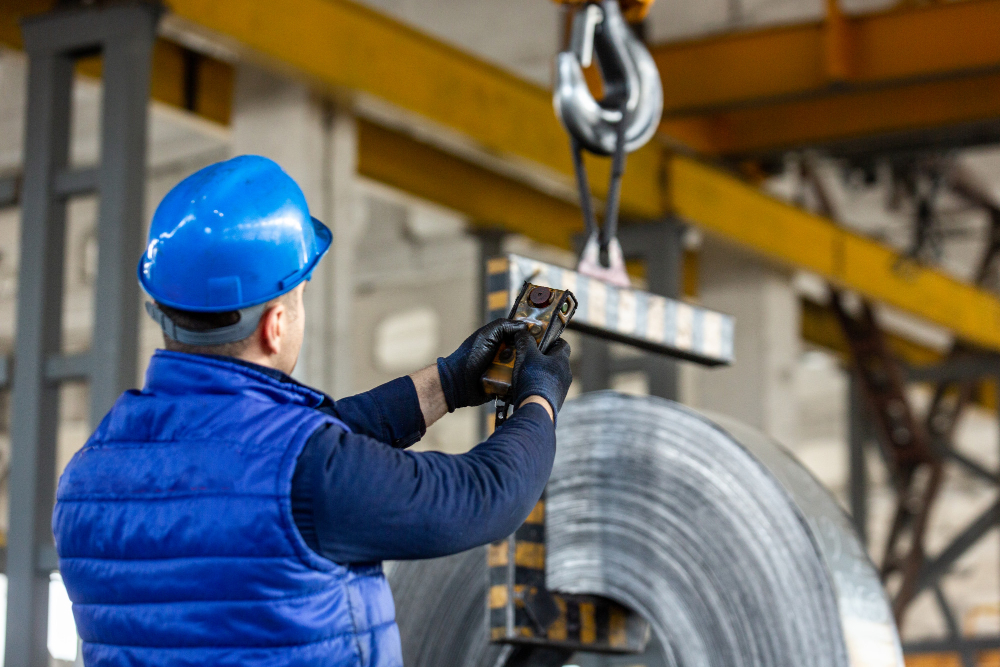

Manufacturing Expert
In the fast-paced world of modern warehousing and logistics, the ability to move heavy materials efficiently and safely is paramount to operational success. Among the various material handling solutions available, hoists stand out as indispensable tools that have revolutionized how businesses manage bulky and heavy loads. Understanding the meaning of hoist technology and its applications can significantly impact your warehouse’s productivity, safety standards, and overall operational efficiency.
The meaning of a hoist extends far beyond a simple lifting device. A hoist represents a sophisticated mechanical system designed to lift, lower, and move heavy loads using a combination of pulleys, cables or chains, and motorized components. This technology serves as the backbone of material handling operations in warehouses, manufacturing facilities, and distribution centers worldwide.
At its core, a hoist operates on fundamental mechanical principles that multiply force through pulley systems, allowing operators to move loads that would otherwise be impossible to handle manually. The system typically consists of a motor, a drum or wheel, a load block, and a hook assembly, all working in harmony to provide controlled and precise movement of materials throughout the facility.
The evolution of hoist technology has been remarkable, transitioning from simple manual systems to sophisticated electric and hydraulic variants that can handle loads ranging from a few hundred pounds to several tons. Modern hoists incorporate advanced safety features, precise control systems, and integration capabilities, making them essential components of contemporary warehouse operations.
Understanding how a hoist functions requires examining its key components and their interactions. The load block serves as the primary lifting mechanism, housing the pulleys that guide the cable or chain. The number of pulleys directly affects the hoist’s mechanical advantage, with more pulleys providing a greater lifting capacity at the expense of reduced lifting speed.
The motor system, whether electric, hydraulic, or pneumatic, provides the power necessary to operate the hoist. Electric motors are most common in warehouse applications due to their reliability, ease of control, and lower maintenance requirements. These motors are typically equipped with variable frequency drives that allow for precise speed control and smooth acceleration and deceleration.
The cable or chain system forms the critical link between the motor and the load. Wire rope cables offer flexibility and smooth operation, making them ideal for applications requiring precise positioning. Chain systems, on the other hand, provide exceptional durability and are preferred in harsh environments or applications that involve frequent heavy lifting.
Control systems have evolved significantly, with modern hoists featuring sophisticated electronic controls that allow for programmable lifting patterns, load monitoring, and integration with warehouse management systems. These controls enhance both safety and efficiency by providing operators with real-time feedback and automated safety features.
The versatility of hoist systems makes them valuable across numerous warehouse applications. In receiving areas, hoists facilitate the unloading of heavy shipments from trucks and containers, reducing the physical strain on workers and minimizing the risk of injury. The ability to position loads precisely allows for efficient placement of materials in designated storage areas.
Storage operations benefit significantly from hoist integration, particularly in facilities handling heavy or bulky items. Hoists enable the utilization of vertical storage space that might otherwise be inaccessible, maximizing warehouse capacity without expanding the facility footprint. This vertical storage capability is especially valuable in urban areas where real estate costs are high.
Order fulfillment processes are streamlined through strategic hoist placement, allowing for rapid retrieval and positioning of heavy items for shipment preparation. The precision control offered by modern hoists ensures that products can be placed exactly where needed, reducing handling time and improving overall throughput.
Manufacturing integration represents another crucial application area, where hoists serve as vital links in production lines. They facilitate the movement of raw materials to processing stations and transport finished goods to packaging and shipping areas. This integration eliminates bottlenecks, ensuring a smooth production flow.

Safety remains the paramount concern in hoist operations, as the equipment handles substantial loads that pose significant risks if not adequately managed and controlled. Comprehensive safety protocols must be established and strictly adhered to to protect both personnel and equipment.
Load capacity management is fundamental to safe hoist operation. Every hoist has a specified working load limit that must never be exceeded. Regular inspection and certification of lifting equipment ensure that capacity ratings remain valid and that wear or damage hasn’t compromised the system’s integrity.
Operator training programs are essential for maintaining safe operations. Personnel must understand proper rigging techniques, load-balancing principles, and emergency procedures to ensure safe operations. Regular refresher training ensures that operators stay current with best practices and safety protocols.
Maintenance schedules play a critical role in preventing accidents and equipment failures. Regular inspection of cables, chains, hooks, and mechanical components helps identify potential issues before they become safety hazards. Lubrication, alignment checks, and wear assessments should be performed according to the manufacturer’s specifications.
Environmental considerations also impact safety protocols. Factors such as temperature extremes, humidity, corrosive atmospheres, and electrical hazards must be evaluated when selecting and operating hoist systems. Proper environmental protection ensures reliable operation and extends the life of equipment.
The diversity of hoist types available allows warehouses to select systems that precisely match their operational requirements. Manual hoists remain relevant for applications involving lighter loads or infrequent use, offering simplicity and lower initial costs. These systems rely on human power transmitted through mechanical advantage, making them suitable for smaller facilities or backup applications.
Electric hoists dominate warehouse applications due to their combination of power, precision, and ease of operation. Single-phase electric hoists are suited for lighter-duty applications, while three-phase systems are designed to handle heavy industrial loads. Variable-speed controls enable operators to adjust lifting speeds according to load requirements and positioning needs.
Wire rope hoists excel in applications requiring smooth operation and precise positioning. The flexibility of wire rope allows for longer lifting heights and reduces wear on system components. These hoists are particularly well-suited for applications involving delicate or precision-positioned loads.
Chain hoists offer exceptional durability and are preferred in harsh environments or applications involving frequent heavy lifting. The positive engagement of chain links provides reliable operation and eliminates concerns about cable stretch or slippage.
Pneumatic hoists serve specialized applications where electric power is unavailable or poses safety risks. These systems are commonly used in explosive atmospheres or environments where electrical sparks could create hazards.
The synergy between hoists and overhead crane systems creates powerful material handling solutions that maximize warehouse efficiency and productivity. Overhead cranes provide horizontal movement capabilities, while hoists handle vertical lifting and precise positioning. This combination allows for the three-dimensional movement of loads throughout the facility.
Bridge cranes equipped with hoists can service large areas of the warehouse floor, eliminating the need for multiple smaller lifting devices. The ability to move loads both horizontally and vertically without manual intervention significantly reduces handling time and labor requirements.
Jib cranes provide localized lifting solutions for specific work areas, offering 180- or 360-degree coverage within their operational radius.
When equipped with appropriate hoists, these systems excel at serving production lines, loading docks, or specialized storage areas.
Gantry cranes provide overhead lifting capabilities in areas where building-mounted systems aren’t feasible. Portable gantry systems equipped with hoists offer flexibility for temporary operations or facilities that require adaptable material handling solutions.

Modern hoist technology incorporates numerous advanced features that enhance safety, efficiency, and integration capabilities. Load monitoring systems provide real-time feedback on lifting loads, preventing overloading, and optimizing performance. These systems can interface with warehouse management software to provide operational data and maintenance alerts.
Variable frequency drives enable precise speed control and smooth acceleration, reducing stress on both the equipment and the loads being handled. Soft start and stop capabilities minimize shock loading, extend equipment life, and improve operator control.
Remote control systems enable operators to maintain a safe distance from lifting operations while maintaining complete control over hoist functions. Advanced radio control systems offer multiple-channel operation, allowing single operators to control multiple hoists simultaneously.
Automated positioning systems can be programmed to move loads to predetermined locations, reducing operator workload and improving consistency. These systems integrate with warehouse management software to coordinate material movements, inventory tracking, and order fulfillment processes.
Predictive maintenance capabilities utilize sensors and data analytics to monitor equipment conditions and predict maintenance needs. This proactive approach reduces unexpected downtime, extends equipment life, and optimizes maintenance costs.
The implementation of hoist systems in warehouse operations delivers substantial economic benefits that extend well beyond the initial equipment investment. Labor cost reduction represents one of the most significant advantages, as hoists enable single operators to handle loads that would otherwise require multiple workers or specialized equipment.
Productivity improvements result from faster material handling cycles and reduced setup times. The ability to position loads precisely eliminates multiple handling steps and reduces the time required for storage and retrieval operations. This efficiency translates directly into increased throughput and reduced operational costs.
Space utilization optimization allows warehouses to maximize their storage capacity without facility expansion. Vertical storage capabilities enabled by hoist systems can significantly increase storage density, deferring or eliminating the need for additional warehouse space.
Damage reduction benefits arise from the controlled and precise handling capabilities of hoist systems. Reduced product damage means lower replacement costs and improved customer satisfaction. Additionally, the reduced physical strain on workers leads to fewer workplace injuries and associated costs.
The energy efficiency advantages of modern electric hoists contribute to reduced operational costs. Advanced motor controls and regenerative braking systems minimize energy consumption while maintaining high-performance levels.
Several emerging trends and innovations are shaping the future of hoist technology in warehouse operations. Internet of Things (IoT) integration is enabling unprecedented levels of connectivity and data collection, allowing for real-time monitoring and optimization of hoist operations.
Artificial intelligence and machine learning applications are now being used to optimize lifting patterns and predict maintenance needs with greater accuracy. These technologies promise to improve efficiency further while reducing operational costs and downtime.
Advanced materials and manufacturing techniques are producing lighter, stronger, and more durable hoist components. These improvements extend equipment life, reduce maintenance requirements, and enhance performance.
Wireless power transmission technologies may eventually eliminate the need for complex cable management systems, simplifying installation and improving flexibility in hoist positioning.
Autonomous operation capabilities are being developed that will allow hoists to operate with minimal human intervention, integrating seamlessly with automated warehouse systems and robotics.
The meaning of a hoist in modern warehouse operations extends far beyond its role as simple lifting equipment. These sophisticated systems represent critical infrastructure that enables efficient, safe, and cost-effective material handling operations. From basic manual systems to advanced automated solutions, hoists continue to evolve to meet the changing demands of modern logistics and warehousing.
The strategic implementation of hoist systems delivers measurable benefits in productivity, safety, and operational efficiency. As technology continues to advance, hoists will become increasingly integrated into the digital ecosystem of modern warehouses, providing enhanced capabilities and intelligence that drive a competitive advantage.
For warehouse operators considering hoist implementation or upgrades, the key lies in understanding specific operational requirements and selecting systems that align with both current needs and future growth plans. The investment in quality hoist systems pays dividends through improved efficiency, enhanced safety, and reduced operational costs, making them indispensable tools in the modern warehouse environment.
The future of warehouse operations will undoubtedly continue to rely heavily on hoist technology, with innovations in automation, connectivity, and intelligence driving new capabilities and opportunities. Organizations that adopt and implement these technologies strategically will be best positioned to succeed in the increasingly competitive logistics landscape.